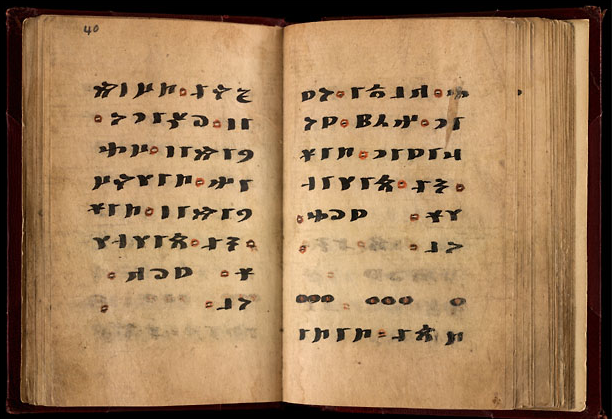Turki letter in 'Runic' script, written by a person namedBaghatur Chigshi, perhaps a military official, apparently in the 9th century, giving an account of some arrangments of the military staff, and making complaints about the commissariat.
One large and four smaller fragments in Kok Turki.
One small fragment in Kok Turki.
Karakhoja - Karahoca
One large and four smaller fragments in Kok Turki.
Karakhoja - Karahoca
One large and four smaller fragments in Kok Turki.
Old Turkic (lang.), Kok Turkic (script)
A small paper book, 5 1/2 in. by 3 1/2 in., containing a tract on divination in Kok Turki (published in J.R.A.S. 1912), preceded and followed by Buddhist devotional verses in Chinese. 58 ff.
Institute: British Library
Site: Dunhuang Mogao (Ch.0033)
Form: booklet
Materials: manuscript, ink on paper
Size (h x w) cm: 13.1 x 8.1
...............................
Irk Bitig or Irq Bitig, the Book of Omens, is the earliest and the only known complete manuscript text written in Old Turkic script also known as "Orkhon" or "Turkic runes", from the storage in the "Library Cave" of the Manichaean monastery Mogao Caves in Taigüntan (Ch. Dunhuang, 40.15°N 94.7°E), East Turkestan, presently in CPR China, by Aurel Stein in 1907, and is now in the collection of the British Library in London, England.
The manuscript text is conjecturally dated by 7th-9th cc. AD, its colophon states that it was written by an anonymous monk for his "elder brother", General İtaçuk (Saŋun İtaçuk) on the 15th day of the second month of the year of the Tiger. The Library Cave was sealed in the early 11th century, the year of the Tiger falls on one the years 702, 714, 726, 738, 750, 762, 774, 786, 798, 810, 822, 834, 846, 858, 870, 882 or 894.
The Heavenly God Tengri in the manuscript from the Manichaean monastery is mentioned in omens no.12, 15, 17, 38, 41, 47, 54, and 60), shown to be benevolent and omnipotent. The manuscript also mentions the Alp of the road bestowing his favor on travelers in omens no. 2 and 48. Title Khan is mentioned in omens no. 34.and 63.
The manuscript is written in a mix of prose and poetry, with poetic features such as rhyme, stylistic parallelism, and consonantal alliteration that uses the same consonant at the beginning of each stressed syllable in a line of verse, and without a fixed poetic metre. The poetic verse form with head rhyme parallels the Scythian poetry translated by Zaur Gasanov (Zaur Gasanov, Royal Scythians, Liberty publishing House, NY, 2002, ISBN 0-914481-61-4, Ch. IX. 6.2. Rhyming of the first syllables in the epos of the "Royal Scythians") from the eloquent message of the Scythians to the Persian king Darius:
MORE: Turkic History - LİNK
and: LİNK
Number of Manuscripts by Language/Script on IDP in the UK as of 22/06/2014 - LİNK
Database search for @Old Turkic (lang.) - LİNK


























































